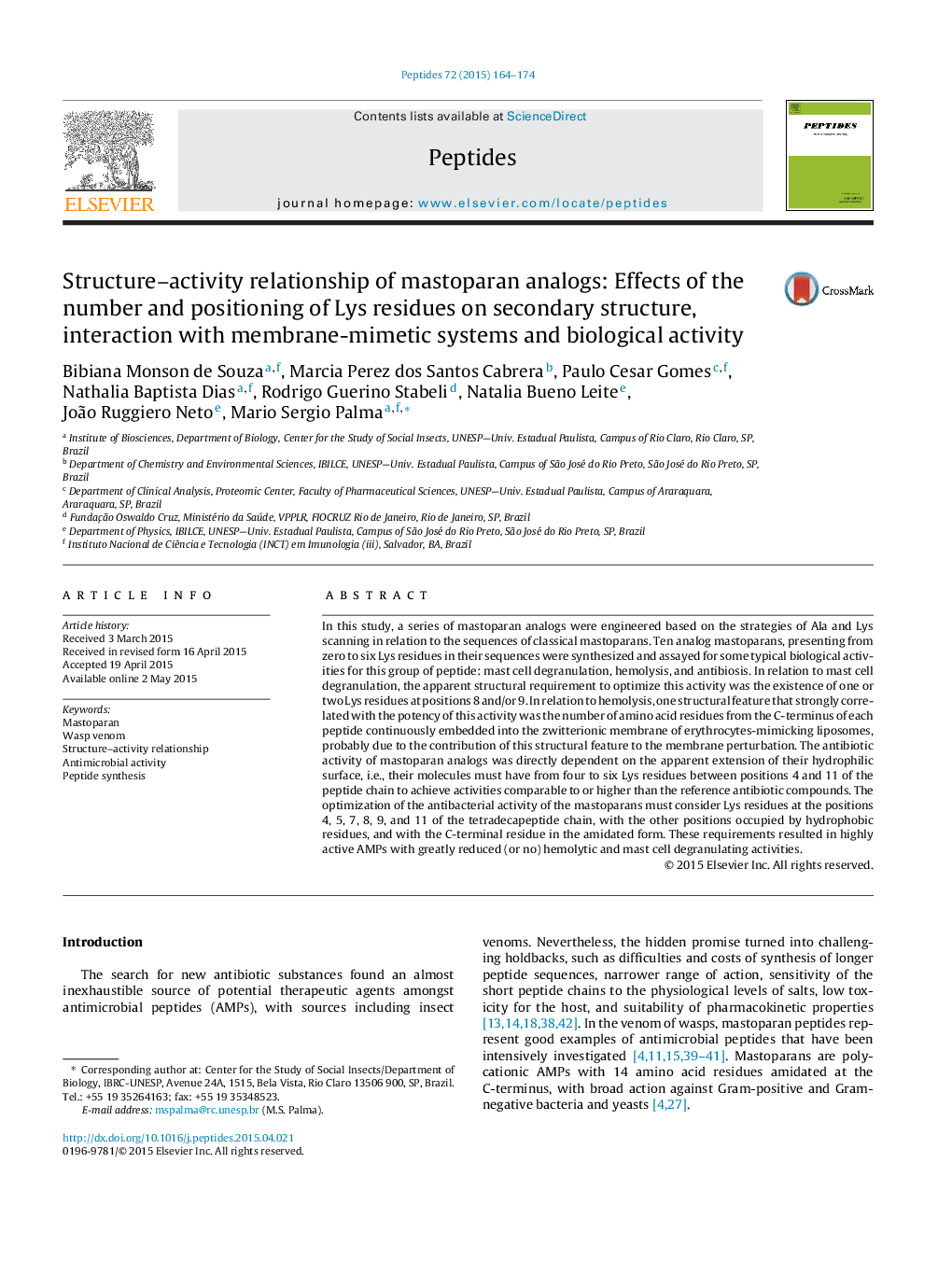| Article ID | Journal | Published Year | Pages | File Type |
|---|---|---|---|---|
| 2005857 | Peptides | 2015 | 11 Pages |
•Mastoparans are used as models for development of novel antimicrobial drugs.•Mastoparan analogs were engineered based using strategies of Ala and Lys scanning.•Ten synthetic mastoparans presenting from zero to six Lys residues were synthesized.•Antibiotic activity of analogs was dependent on the extension of hydrophilic surface.•Mast cell degranulation was dependent of Lys residues at positions 8 and/or 9.
In this study, a series of mastoparan analogs were engineered based on the strategies of Ala and Lys scanning in relation to the sequences of classical mastoparans. Ten analog mastoparans, presenting from zero to six Lys residues in their sequences were synthesized and assayed for some typical biological activities for this group of peptide: mast cell degranulation, hemolysis, and antibiosis. In relation to mast cell degranulation, the apparent structural requirement to optimize this activity was the existence of one or two Lys residues at positions 8 and/or 9. In relation to hemolysis, one structural feature that strongly correlated with the potency of this activity was the number of amino acid residues from the C-terminus of each peptide continuously embedded into the zwitterionic membrane of erythrocytes-mimicking liposomes, probably due to the contribution of this structural feature to the membrane perturbation. The antibiotic activity of mastoparan analogs was directly dependent on the apparent extension of their hydrophilic surface, i.e., their molecules must have from four to six Lys residues between positions 4 and 11 of the peptide chain to achieve activities comparable to or higher than the reference antibiotic compounds. The optimization of the antibacterial activity of the mastoparans must consider Lys residues at the positions 4, 5, 7, 8, 9, and 11 of the tetradecapeptide chain, with the other positions occupied by hydrophobic residues, and with the C-terminal residue in the amidated form. These requirements resulted in highly active AMPs with greatly reduced (or no) hemolytic and mast cell degranulating activities.
Graphical abstractFigure optionsDownload full-size imageDownload as PowerPoint slide
